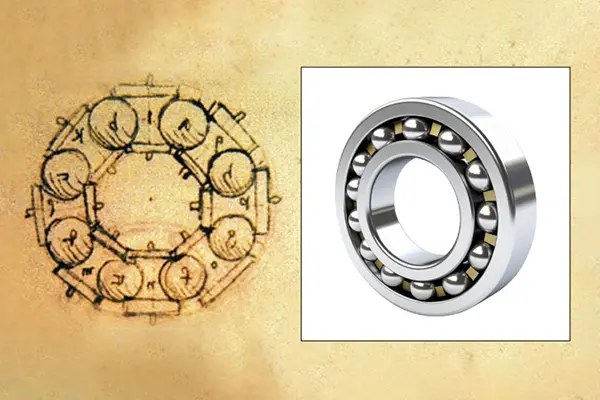
Who Designed the First Ball Bearing?
2024-12-04
Ball bearings are crucial inventions in mechanics and engineering. They reduce friction and enable the smooth motion of machinery. They are found in everything from bicycles to space shuttles, making them a cornerstone of modern technology. But who designed the first ball bearing, and how did this invention come to be? To answer this question, we must journey back through history to explore the origins and development of this revolutionary device.
1. The Early Concept of Bearings
Before the first ball bearing was formally designed, using rolling elements to reduce friction had been understood for centuries. Ancient civilizations, including the Egyptians and the Greeks, used rudimentary rolling systems to transport heavy objects.
- Egyptian Innovations: The Egyptians used logs as rollers to move massive stones, a primitive form of what we now understand as bearing systems.
- Roman Contributions: The Romans improved on the idea by developing water wheels and chariots that utilized wooden rollers and pivots, early attempts to minimize friction in rotating systems.
These early inventions laid the groundwork for the later development of ball bearings.
2. Leonardo da Vinci: A Visionary Idea
The first recorded design resembling a modern ball bearing comes from none other than Leonardo da Vinci, the renowned artist, engineer, and inventor of the Renaissance era. Around 1500, da Vinci sketched a bearing design in his notebooks.
- Leonardo’s Contribution: His design used small, spherical balls to reduce friction between a rotating shaft and its housing. While he never built a working prototype, his detailed sketches show an understanding of the principles behind reducing friction through rolling contact.
- Why It Was Revolutionary: Da Vinci’s design demonstrated how load distribution across multiple balls could make systems more efficient. This concept is still fundamental to modern ball bearings.
However, da Vinci’s design remained theoretical and did not reach practical application during his lifetime.
3. The Industrial Revolution: The First Practical Ball Bearing
The transition from theory to practice occurred during the Industrial Revolution. As machinery became more advanced, there was an increasing demand for efficient ways to reduce friction in moving parts.
- Philip Vaughan’s Patent: In 1794, Welsh inventor Philip Vaughan patented the first ball bearing. Vaughan’s design included a metal ball bearing housed within a groove to support a rotating axle, making it the first practical implementation of da Vinci’s earlier ideas.
- Application: Vaughan’s invention was initially used in carriage axles, where it significantly improved efficiency and durability by reducing friction and wear.
Vaughan’s ball bearing marked the beginning of a new era in engineering, as it solved a practical problem and was widely applicable to industrial machinery.

4. The Evolution of Ball Bearings
After Vaughan’s innovation, ball bearings continued to evolve, with contributions from various inventors and engineers. The 19th and 20th centuries saw significant improvements in design and material.
- Friedrich Fischer: In the late 19th century, German inventor Friedrich Fischer revolutionized ball-bearing production by designing a machine that could grind steel balls to a high degree of precision. This made ball bearings more uniform and reliable.
- Henry Timken: In 1898, Henry Timken patented the tapered roller bearing, a variation of the ball bearing, which offered better load-bearing capacity and durability.
These advancements ensured that ball bearings became a fundamental component in industrial machinery, transportation, and modern devices.
5. Impact of Ball Bearings Today
The invention of the ball bearing has had a profound impact on various industries, from automotive to aerospace and manufacturing. Its ability to reduce friction has made countless innovations possible.
- Automotive Industry: Ball bearings are integral to the functioning of engines, wheels, and transmission systems.
- Aerospace Applications: In airplanes and spacecraft, ball bearings ensure precision and reliability under extreme conditions.
- Everyday Use: Ball bearings are found in household appliances like fans, washing machines, and bicycles, improving their efficiency and longevity.
6. Conclusion
While the concept of reducing friction through rolling elements existed in ancient times, the first practical ball bearing was designed and patented by Philip Vaughan in 1794. His invention was built upon centuries of understanding and da Vinci’s visionary sketches, paving the way for countless advancements in engineering and technology. Today, ball bearings are ubiquitous, a testament to the ingenuity of early inventors and the enduring importance of this simple yet transformative device.





